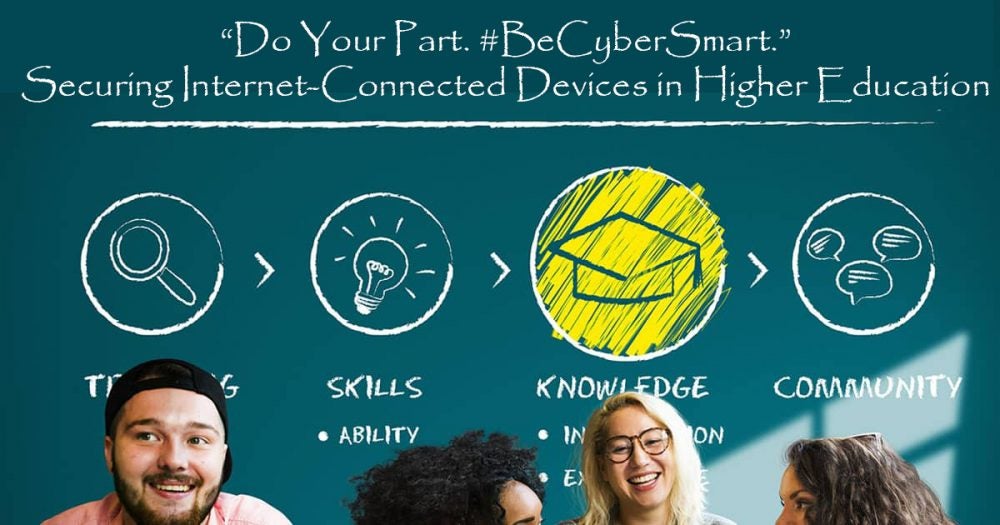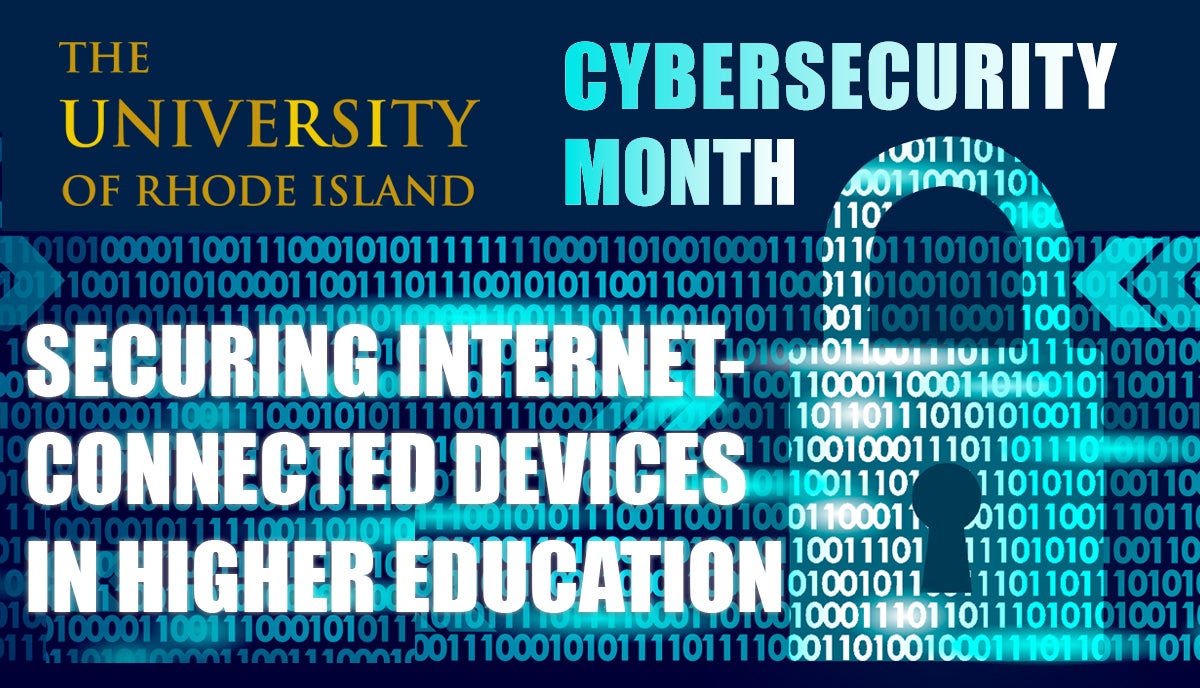The “New Normal” means that we work and learn in either fully online environments or blended environments. As the University prepares for fully online or blended virtual and in-person learning environments, it is important to understand some basic cybersecurity steps students, faculty and staff can take to make sure they work and learn securely.

THINK BEFORE YOU CLICK
Remember what you learned about not accepting candy from strangers? Apply that to the online world as well. Do not click links in emails, text messages, chat boxes, etc. from people you do not know–and be suspicious of links sent from those you know as well. If you encounter suspicious messages or attachments don’t open them and if ever in doubt you could always double check with the URI Service Desk further investigation.
PROTECT YOUR PERSONAL INFORMATION
Personal information is any information that can be used to identify you or your accounts. Examples include your name, address, phone number, usernames and passwords, pictures, birthday and social security number. Don’t post or share this information with others. We engage in Zoom meetings, respond to emails, take quizzes online among other mundane activities that we do every day. Even though we do these things every day we must stay cognizant about the dangers that exist when let our guards down and we don’t do our part to stay secure online. It only takes one time to let your guard down and end up in a data breach. Data breaches do not typically happen when a cybercriminal has hacked into the University’s infrastructure. Many data breaches can be traced back to a single security vulnerability from an unpatched device, phishing attempt, or an instance of accidental exposure. Be cautious of unusual sources, do not click on unknown links, and delete suspicious messages immediately. By securing your internet connected devices while working or learning online whether or not you are on campus or at the local coffee shop will ensure that your digital experience is safe and secure. Don’t forget Do your Part Be Cyber Smart and secure your devices while online.
DATA HANDLING – HANDLE WITH CARE!
As users of technology we need to take responsibility in helping secure our personal data, because if we don’t those assets could be accessed without our knowledge/permission and even worse our identity could be stolen. On a personal level, I have a family member whose data was leaked through an unknown source and used to extort and threaten them. They were forced to purchase new phones, new phone plans, delete social media accounts, and change email addresses in order to help stop the threats. The use of data helps make our lives more convenient and streamlined which likely means the proliferation of online data and devices are here to stay. There is one best practice that each of us can apply that will help personal data stay more secure – only share on a need-to-know basis.
It’s everyone’s responsibility to play their part to keep data and devices safe in Higher Education. We learn, work and conduct research in different types of environments and all these activities make up the work we do in Higher Education.
Take A Quick Quiz To Check Your CyberSmarts

